I have a dual-coil relay. The coils are rated at 12 V. The coils set (or reset) at 6 V, and require a pulse of between 15 and 100 milliseconds.
The relay is TE Connectivity, part # V23130-C2021-A412.
I am trying to make a driver that will pulse the set coil when the driver's input is high (12 V) and then pulse the reset coil when the driver's input goes low (0 V).
I have found the following circuit that would work for a coil that accepts continuous current, but it does not give a pulse:
(Note: the diodes will not be required because my relay has internal flyback diodes).
Simply adding a capacitor between the voltage supply and the coils would give a pulse but there would be no way for it to discharge.
I would also consider some kind of IC if that is required but would like to avoid an IC.
I would be grateful for any suggestions.

